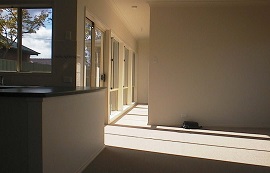If you have a two story home, you may have noticed that the second floor feels too hot compared to the rest of your home. Many people don’t notice this problem until the hotter months of the year arrive and then forget all about it until it happens again the next year. The typical reaction is to make the air colder there to compensate, but this doesn’t work, and the system is run all day for no appreciable difference. Let’s examine why this happens and what you can do to solve the problem.
There are three main reasons why you may be experiencing a higher temperature on your second story.
1. Hot Air Rising
If you have an HVAC system on the first floor, it will need to push out the hotter air when cooler air is forced into the room. The system will have to work hard to try and distribute this treated air to the second floor. The amount of work your HVAC system has to deal with can be affected by factors, such as the age of the equipment, the efficiency of the system and the number of rooms in your home.
2. A Hot Roof
The second story may be too hot in the summer because of the roof. If the roof has no protection from the sun and no way to deflect the sun’s rays, it will absorb the heat. This energy will travel through the attic and into the second story to heat up the space. This will make it much harder to cool with your HVAC system.
3. Ductwork Issues
The ducts are needed to distribute the cool treated air throughout your home. If the ductwork isn’t installed correctly and/or has leaks, the HVAC system will have to work harder to try and cool the home. Another common issue is insufficient ductwork to carry the cooled air to the second story.
Fixing the Problem
Once you’ve identified the source of the problem, here are three ways you may be able to fix it.
1. Insulate and Ventilate
If you have adequate levels of insulation in the attic, it will reduce the amount of heat that can reach the second story. The attic will also need a fan for ventilation to ensure that the heat and any moisture is removed. Close some of the first floor supply vents to improve air circulation on the second story and make sure that the vents upstairs are not blocked.
2. Redirecting the Airflow
Homeowners with a basement can locate HVAC system dampers on ducts that lead to the first floor and close them halfway. This will increase the airflow to the second story and reduce the temperature.
3. Air Filter Issues
If the air filter in your HVAC system is dirty, it can restrict the airflow in your home. The air filter should be cleaned or replaced each month to ensure that the airflow is unimpeded.
Hopefully, this will help you to cool down your second story during the hottest months of the year. If you need more help, a local HVAC specialist will be able to offer detailed advice in dealing with this and many other indoor comfort issues.

